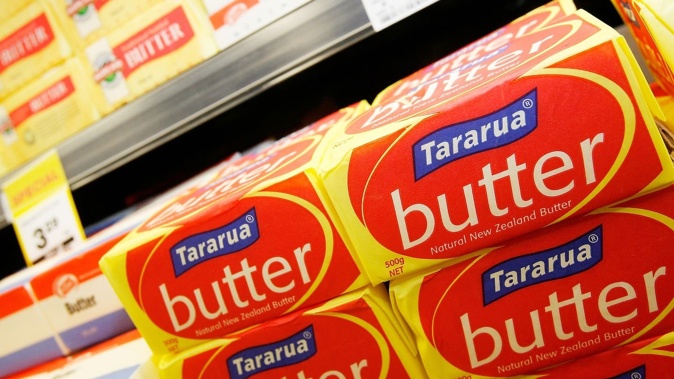
Butter, cheese and milk were the biggest drivers of a rise in food prices for the year to April 2025, new figures from Stats NZ show.
Food prices increased 3.7% in the 12 months to April – well ahead of the annual inflation rate at 2.6%.
That follows a 3.5% increase in the 12 months to March 2025.
Higher prices for the grocery food group and the non-alcoholic beverages group contributed most to the annual increase in food prices, up 5.2% and 6.8%, respectively.
Within the grocery category, milk and cheese prices increased 15.1% and 24%, respectively, while butter prices increased 65.3%.
But price increases were widespread, with all five food groups recording an increase, prices and deflators, spokeswoman Nicola Growden said.
“Price increases for dairy products led the increases for April 2025,” Growden said.
“The average price for 500g of butter was $7.42 in April 2025. That’s nearly $3 more expensive than this time last year,” Growden said.
The increase in the non-alcoholic beverages group was driven by higher prices for instant coffee, up 21.3% in the 12 months to April 2025.
“Instant coffee prices have increased $1.44 since this time last year. The average cost is now $8.21 per 100g,” Growden said.
Stats NZ’s selected price indexes provide a monthly update on 46.5% of the goods and services in the total consumers price index (which is released quarterly).
It includes food, rent, travel and – for the first time this month – electricity prices.
Electricity prices increased 2.3% in April 2025 compared with March 2025, while gas prices increased 1.1%.
Prices for international airfares increased 24.7% in April 2025 compared with March 2025, while prices for domestic airfares increased 3.8%.
“The more expensive air travel costs coincided with school holidays and consecutive long weekends throughout April,” Growden said.
The increase in international airfares was driven by higher prices for flights to the Pacific Islands, Australia and Asia.
Rents rose 0.2% on a monthly basis and were up 3% annually, based on the stock measure.
The stock measure shows rental price changes across the whole rental population, including renters currently in tenancies.
“Selected Price Indexes (SPI) for April came in a touch stronger than our expectation,” said ANZ senior economist Miles Workman.
It was up 0.9% stronger ( month on month) than the flat read ANZ had pencilled in.
“But much of the surprise came from the volatile components,” he said.
Liam Dann is business editor-at-large for the New Zealand Herald. He is a senior writer and columnist and also presents and produces videos and podcasts. He joined the Herald in 2003.
Take your Radio, Podcasts and Music with you









